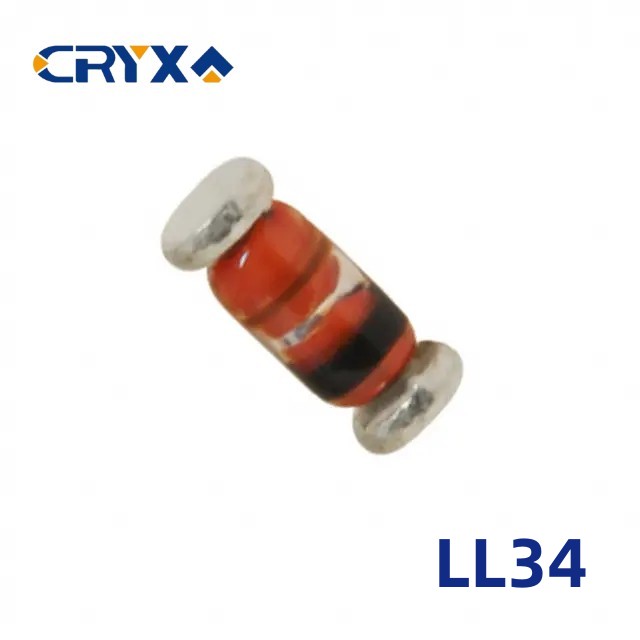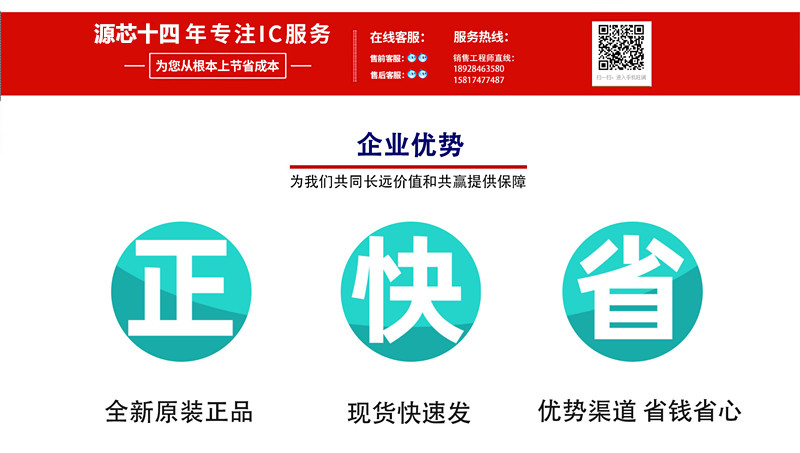1、 What is the third generation semiconductor?
The third generation of semiconductors, represented by silicon carbide and gallium nitride, can be applied in higher-order high-voltage power components and high-frequency communication components. Main applications: high-temperature, high-frequency, radiation resistant, high-power devices; Blue, green, purple photodiodes, semiconductor lasers, better electron mobility, band gap, breakdown voltage, high frequency, high temperature characteristics.
http://www.ic-bom.com/ 2、 Third generation semiconductor classification
Although silicon carbide and gallium nitride are both third-generation semiconductor materials, their applications are slightly different. Gallium nitride is mainly used in products with a voltage of about 600 volts in the medium voltage field, some of which overlap with the market for silicon materials. However, gallium nitride has good mobility and is suitable for high-frequency products. This characteristic will have advantages in high-speed products such as base stations and 5G; Silicon carbide, on the other hand, can be used in products with higher voltages, such as kilovolts, including electric vehicles, high-speed rail, or industrial applications, with excellent high-temperature and high-pressure resistance characteristics. Therefore, taking silicon carbide wafers as an example, the market is more optimistic about their applications in the automotive market, including charging stations, new energy vehicles, and motor drives.http://www.ic-bom.com/

3、 Current situation of silicon carbide material market
At present, the market of SiC chips (including SiC for lighting) is mainly dominated by the United States, Europe and Japan, of which Cree accounted for more than 62% in 2018, and with II-VI and Si Crystal, the market share reached 90%. Therefore, at present, the manufacturers of the United States, Europe and Japan are relatively leading in the global silicon carbide industry, of which the manufacturers of the United States occupy a leading position. It‘s not like overtaking on domestic curves, they also play well.
.jpg)
4、 Silicon carbide industry chain
In terms of manufacturing process, most of the equipment is the same as traditional silicon production lines, but due to the high hardness characteristics of silicon carbide, some special production equipment is required, such as high-temperature ion implantation machines, carbon film sputtering machines, mass production high-temperature annealing furnaces, etc. The availability of high-temperature ion implantation machines is an important criterion for measuring silicon carbide production lines.
The value chain of SiC devices can be divided into substrate epitaxial wafer device, with the substrate accounting for up to 50% of the cost. The main reason is the slow growth of single crystals, unstable quality, and the high price of SiC, which has not been widely promoted. Semi conductive SiC substrates are mainly n-type substrates, mainly used for epitaxial manufacturing of GaN based high-power RF devices such as GaN based LEDs and SiC based power electronic devices. Semi insulating SiC substrates are mainly used for epitaxial manufacturing of GaN based high-power RF devices.http://www.ic-bom.com/
5、 Current situation of domestic silicon carbide industry
In terms of single crystal substrates, the main substrate in China is 4-inch. Currently, 6-inch conductive SiC substrates and high-purity semi insulating SiC substrates have been developed. According to CASA data, Shandong Tianyue, Tianke Heda, Hebei Tongguang, and Zhongke Energy Conservation have all completed the research and development of 6-inch substrates, and Zhongke Equipment has developed 6-inch semi insulating substrates. In terms of devices/modules/IDMs, China has some shortcomings in the design of silicon carbide devices, and there is no manufacturer involved in this yet.

However, a number of excellent enterprises have emerged in the manufacturing of modules and devices in China, including San‘an Integration, Haiwei Huaxin, Taike Tianrun, CRRC Times, Century Golden Light, Xinguang Runze, Shenzhen Basic, Guoyang Electronics, Silan Micro, Yangjie Technology, Zhanxin Electronics, Tianjin Zhonghuan, Jiangsu Huagong, Dalian Xinguan, and Licheng Semiconductor.
Silicon carbide is mainly used in power semiconductors, so the IDM mode can ensure product yield and control costs. This means that the IDM mode will be mainly adopted, which will greatly help domestic manufacturers break away from their dependence on overseas. At the same time, the first mover advantage is a characteristic of the semiconductor industry, and the high market share of Cree also confirms the importance of the first mover advantage. Compared to Si, the starting time of domestic manufacturers‘ research on SiC is not much different from foreign manufacturers, so domestic manufacturers have the hope of catching up with foreign manufacturers and completing domestic substitution.http://www.ic-bom.com/




.jpg)


